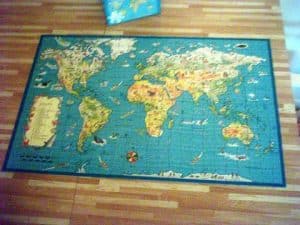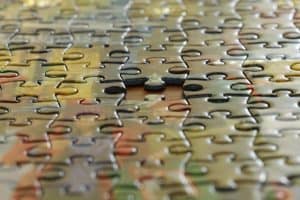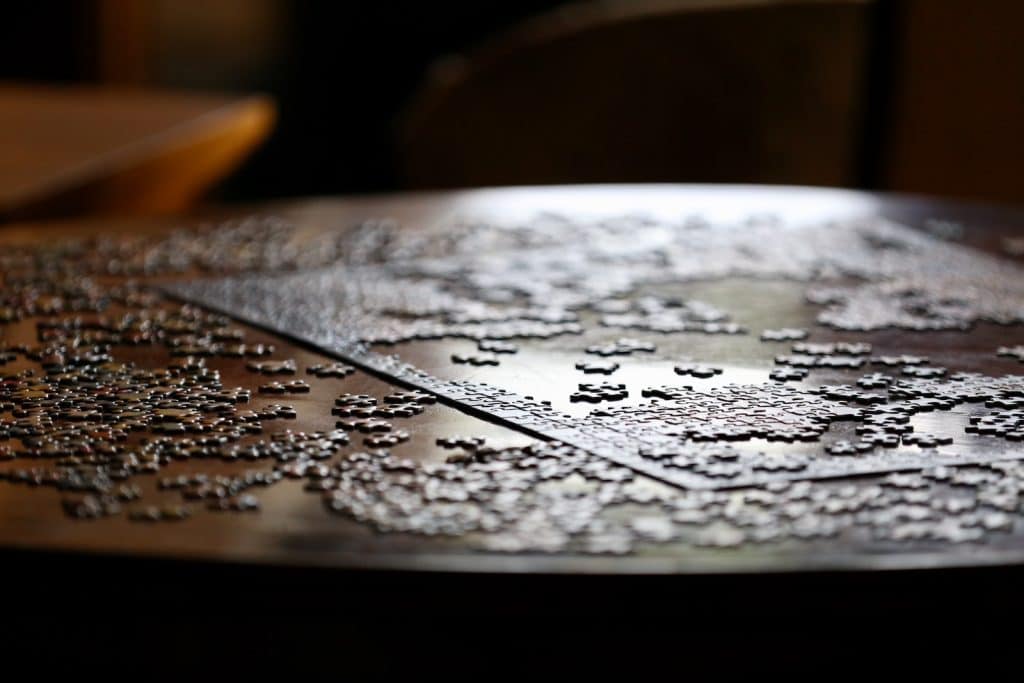Where was the first jigsaw puzzle made? In the vast landscape of entertainment and pastime activities, few have stood the test of time like jigsaw puzzles. These seemingly simple yet captivating diversions have a rich history that traces back to their very origin. Today, let’s embark on a journey to discover the fascinating story behind the creation of the very first jigsaw puzzle and how it has evolved into the beloved pastime we know today. Where was the first jigsaw puzzle made?
The Birth of the Jigsaw Puzzle

The history of jigsaw puzzles is a tale of ingenuity and creativity. In the late 18th century, a man named John Spilsbury played a pivotal role in giving birth to the concept. As a map engraver and a man with a keen sense of educational tools, Spilsbury created the world’s very first jigsaw puzzle in 1767. The aim was not merely entertainment but rather a practical educational tool, designed to help children learn geography in an interactive and engaging way.
The Pioneer: John Spilsbury
John Spilsbury, a name that echoes through the corridors of puzzle history, was more than just a puzzle maker. He was a visionary who saw the potential of using dissected maps as a tool for learning. His innovative approach to education laid the foundation for the very first jigsaw puzzle—a wooden marvel that would set the stage for centuries of puzzle-solving enjoyment.
The First Puzzle: A World Map

The inaugural jigsaw puzzle crafted by Spilsbury featured a world map, an ambitious and intricate design that challenged learners of all ages. The wooden puzzle pieces, carefully cut to represent countries and continents, provided a hands-on approach to understanding geography. The very first jigsaw puzzle wasn’t just a game; it was an educational revolution.
The Educational Angle
Spilsbury’s invention marked the early days of using puzzles as educational tools. Wooden puzzles, with their tactile pieces and visual appeal, became a staple in classrooms, aiding children in the learning process. The concept of cut jigsaw puzzles quickly gained traction, becoming an integral part of early education.
Jigsaw Puzzles Through the Ages
As the years rolled on, jigsaw puzzles transitioned from educational tools to sources of entertainment. The puzzle production industry expanded, offering a variety of materials, including cardboard puzzles. The early puzzles, often featuring dissected maps and educational themes, captivated the minds of puzzlers of all ages.
From Wood to Cardboard: Puzzle Evolution

The evolution of jigsaw puzzles witnessed a shift from predominantly wooden puzzles to the introduction of cardboard puzzles. This change opened up new possibilities, making puzzles more accessible to a broader audience. Hundreds of thousands of people rushed to join the puzzling craze, turning it into a beloved pastime for adults and children alike.
Puzzles During Historical Milestones: World War II and the Great Depression
The Great Depression and World War II were significant chapters in history that influenced the world of puzzles. During these challenging times, puzzles served as a form of escape and entertainment. Large corporations, including Parker Brothers, played a crucial role in creating jigsaws that not only challenged but also provided a respite from the hardships of the era.
The Allure of Jigsaw Puzzles: Then and Now
The enduring popularity of jigsaw puzzles can be attributed to their ability to create a sense of accomplishment and satisfaction. Solving a puzzle, whether for educational purposes or leisure, transcends ages. The challenge of fitting interlocking pieces together, piece by piece, remains a timeless joy that continues to captivate generations.
Unlocking Creativity: Children’s Puzzles and the Magic of Learning

Children’s puzzles, with their vibrant colors and playful designs, hold a special place in the world of entertainment and education. These puzzles go beyond mere recreation; they are invaluable tools for fostering creativity and cognitive development in young minds. In the realm of invented puzzles, puzzle makers have continuously explored innovative ways to engage and educate children.
Dissected puzzles specifically tailored for young learners feature enchanting scenes, often inspired by beloved nursery rhymes. These puzzles serve as gateways to a world where education meets imagination. Imagine the joy of a child fitting together edge pieces to reveal characters from their favorite rhyme, experiencing the tactile pleasure of assembling a puzzle that is both entertaining and educational.
Edge pieces take on a crucial role in children’s puzzles, guiding little hands as they embark on the adventure of solving and creating. Puzzle makers, inspired by the limitless potential of young minds, craft these puzzles with care, ensuring that each piece fits seamlessly into the next. The legacy of dissected puzzles for children is not merely in their entertainment value but in the sparks of creativity and learning they ignite.
Final Thoughts: Where Was the First Jigsaw Puzzle Made?
The story of the first jigsaw puzzle is a testament to human creativity and the enduring appeal of puzzles. From the wooden pieces of John Spilsbury’s map to the diverse array of puzzles available today, the journey of jigsaw puzzles reflects our collective desire to challenge ourselves, learn, and find joy in the process. As we piece together the history of these captivating diversions, let’s celebrate the legacy of the very first jigsaw puzzle—a humble wooden map that sparked a global phenomenon.

